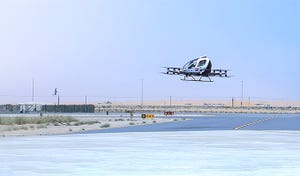Liat Ben-Zur Calls on Consumers to Champion Connected Healthcare
Philips executive believes that any future success of the IoT will revolve around the consumer being the actual hero, not the technology, especially in the case of healthcare.
June 15, 2017

By Chris Nordlinger
Liat Ben-Zur believes that any future success of the Internet of Things will revolve around the consumer being the actual hero and not the technology.
Now the senior vice president and digital technology leader at Philips, she knows full well how important it is to engage and empower oneself with IoT solutions to take healthcare into one's own hands.
Ben-Zur has a real lineage in IoT, having previously helped found and build the AllSeen Alliance — the broadest cross-industry open source project to advance a common language for the Internet of things — and led Qualcomm's internet of things AllJoyn open source solution. She is an engineering leader, experienced global executive and digital technology visionary.
Speaking at IoT World Europe 2016, she said, “Let's take healthcare out of the hospitals and make it a patient experience. Give the patient and the caregivers the right education. Connect the right pathways between patients and doctors.”
She claims that it's not just about the right digital health pathways: “To create real longitudinal records that matter, wearable trackers linked to practitioners are needed to create real health records over time and in disparate places. I may not always be ill and I may be in different places but I need to be tracked.”
In her role at Philips, Ben-Zur has the ability to connect all of this for the future of better connected care. She can tie together Philips' healthcare mission using IoT to serve a connected patient with better outcomes.
“We have to go from reactive to proactive — take healthcare into our own hands. It's not just about the data from trackers and apps. It's about connecting it with doctors and healthcare systems to get meaningful info and better patient care.”
She tells the story about a pilot project they had with patients using a CPAP device for sleep apnea, a disorder in which someone can stop breathing while asleep. In the program, they were having significant problems getting patients to be compliant in using their devices whether because of stigmas or just not picking up the habit.
What Philips did in concert with program doctors was to give users connected CPAPs to take home with them. “It's about getting doctors to give patients the right education. People don't want to follow the procedure. But not following a CPAP regime has real dangers for people who have sleep apnea.”
With the connected device, Ben-Zur claims they got a 22% increase in usage.
“Right now with all the digital info we get from mobile, wireless and the Internet of Things, we can take healthcare out of the hospital and focus on the user experience,” she explained.
She claims that 50% of fitness trackers end up in the drawer. “I use every tracker out there to see what works, but the data is in islands. Buy this device and it's in his cloud. Buy something else, and it's in his cloud. We are making nice little graphs with our devices. But we are not connecting the dots to make it actionable.
“In terms of my number one priority in applying technology to medicine it has to be about the patient first and foremost.”
Fortunately, IoT offers precisely this opportunity.
You May Also Like


.jpg?width=700&auto=webp&quality=80&disable=upscale)

.png?width=300&auto=webp&quality=80&disable=upscale)
.png?width=300&auto=webp&quality=80&disable=upscale)
